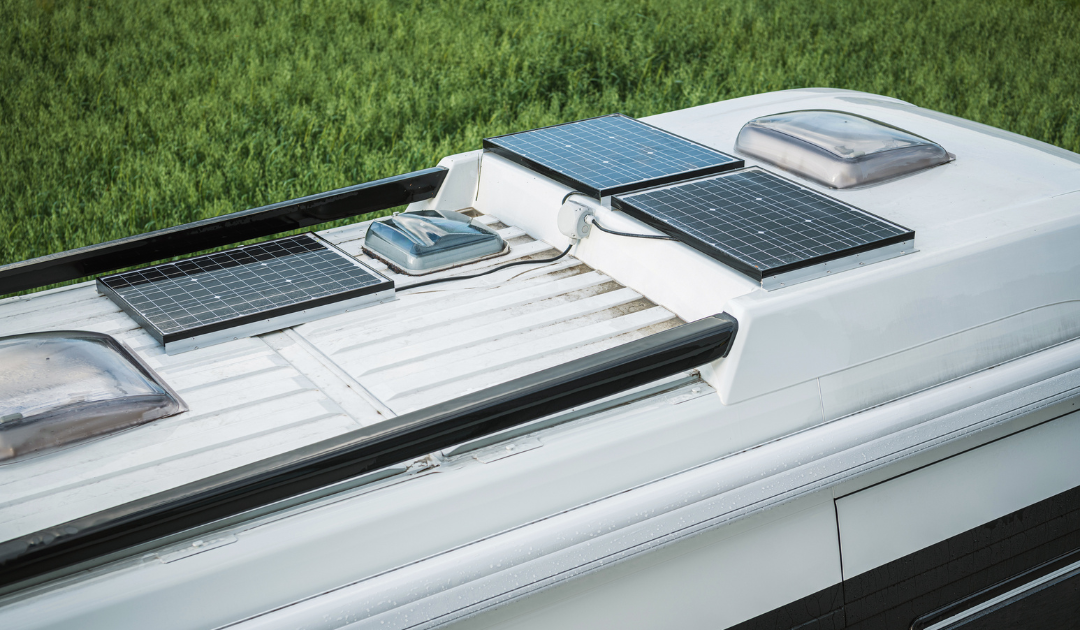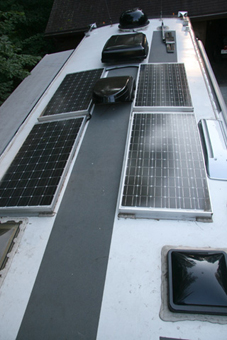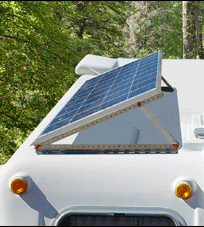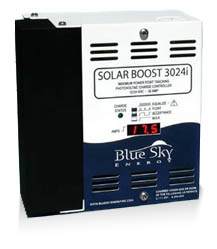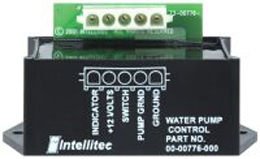Solar Panels in RVs
Solar panels are widely misunderstood. The most common question posed is “How many solar panels do I need to run my RV?” But, the fact of the matter is that solar panels don’t run anything. It’s your batteries that will provide enough amp-hrs to power your electrical devices. Solar panels don’t output enough amp-hrs to run a device but they will continue to provide that slow and steady output over a fairly long time frame so in effect, solar panels are strictly battery chargers. Your electrical devices will draw amps from your batteries but solar panels will put some amps back into those batteries. Unless you have a massive solar panel array or are a real miser with your power consumption, you’ll never be able to keep your batteries from running down. Eventually you will need to run your generator to recharge those batteries and bring them up to a full charge. However, solar panels can add enough extra amps to extend the timeframe between generator runs so that it occurs at a time that’s more convenient for you.
A solar panel array featuring four 120-watt panels on a 40’ coach
Limitations of Solar Panels in RVs
One of the biggest limitations of solar panels is that you need enough of them to make a difference. If you think that slapping a 50 watt panel on the roof is going to do something, then you are wasting your money. Unfortunately, panels take up some room and not every RV roof has an overabundance of that. The image above shows an array of four 120 watt panels on a 40′ coach. It was possible to place two on each side and still be able to walk down the center of the roof for service access on the gray non-skid surface.
Solar panels with tilt mounts align the panel to the sun for better performance
How to Maximize Power from Solar Panels
Solar panels create the most power when they are getting direct sunlight and lots of it. They can be ordered with flat mounts or tilt-up mounts. Tilt up mounts have the advantage of being able to be aimed at a southern exposure so that the solar panel can receive more light throughout the day. You do have to park the RV so that the panels are facing south though and that’s not always an option. Also, if you forget to put them down and lock them before driving away you’ll be buying new panels and patching some holes in the roof where they used to be mounted to. Overall, flat panels are the safe bet for a motorhome. The benefits of an adjustable mount just aren’t that much that it pays to put up with the hassles they bring unless you are staying in one place for a long time.
Solar panels vary in output but it’s proportional to their size. You won’t find a panel that has significantly higher output than another in the same physical size. The biggest difference in panels is their ability to produce power under less than optimal conditions. Unfortunately, there is no rating method or specs that will tell you this so you’ll have to rely on information from other owners or a sales rep that you can trust. Some panels will put out their maximum rated output when it’s nice and bright but fall off sharply when the light is dimmer later in the day, early in the morning, or when it’s overcast. Some panels continue to produce respectable light output under less than optimal conditions. Those are the ones you want to have because it’s all about the total amp-hrs output during the day, not just what’s happening at high noon.
You’ll need to determine just how many amp-hrs you’ll be using during a 24 hour period. Take the wattage of any 12 volt items, such as lights, fans and blower motors, and divide by 12 to find the amps. Then multiply that number times the numbers or hours (or portion of an hour) that each item will be run during that day. Make a note of that number. Then do the same for all of your 120 volt loads except divide those wattage amounts by 10 instead of 12 to find out how many 12 volt amps will be needed to feed the inverter. This will allow for a 20% inverter efficiency loss, which is more than adequate for planning purposes. Add everything up and that’ll tell you how many amp-hrs you’ll need to run everything during a 24 hour period.
Go look at your battery bank size. A typical four battery bank of 6 volt golf cart style batteries should be around 440 amp-hrs in size at 12 volts. You don’t want to run these batteries below approximately 50% charge level so you should limit their use to 220 amp-hrs before recharging them. If your above calculations show that you are consuming more than that, you won’t make it through the day. Calculate the difference between what you need and what you have and that’s your shortage. If you can install solar panels to exactly supplement that amount you’ll be able to make it 24 hours before recharging via the generator.
If you are an avid boondocker chances are you’ve figured out ways to minimize your power consumption. By doing the above math you may find that it’s possible to camp for a number of days before needing to run the generator. Solar panels can help extend that as well. Remember that we said earlier that solar panels don’t run anything. What they do is provide “free” amp-hrs of battery charging power that can help extend your recharge times to where it is more convenient for you. One other option is to just add more batteries. Extra batteries will cost you far less than solar panels so if all you are looking for is a few extra hours between charge cycles I’d look at adding batteries. If you do decide that solar panels are a good fit for your RV style then you still may want to add additional batteries. If you use AGM batteries rather than flooded batteries you’ll also get more runtime. This was discussed earlier in the Batteries chapter. Another way to maximize your solar panel output is with a good charge controller.
A 30-amp MPPT solar charge controller
Typical water pump controller

